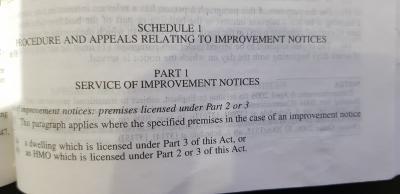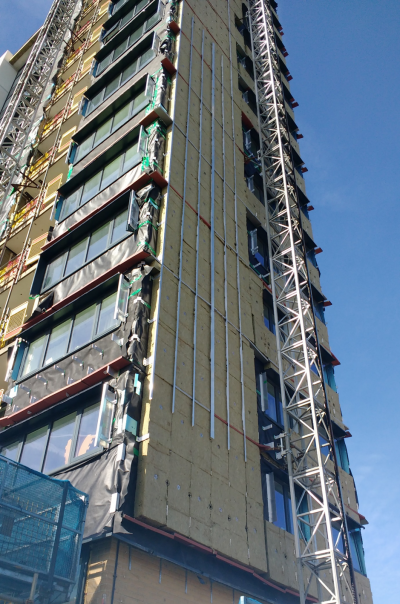Part 2: Building owners, local authorities and remediation: Some tentative thoughts
Posted:
Time to read:
As at 31 January 2019 there are ‘361 high-rise residential and public buildings where ACM cladding systems unlikely to meet Building Regulations remain in place’; and, worryingly, although the focus has been on ACM, it has been claimed that there are more than 1,600 high-rise buildings with unsafe cladding and yet testing has not really begun on those with non-ACM cladding. In response to the most recent Parliamentary questions the Housing Minister Kit Malthouse emphasised the Government’s responsibility is to make sure that everybody is safe in these buildings. Although the details are not public, it is clear that the Government has been working with ‘building owners and developers’ and has put pressure on them to both fix the problem and ‘do the right thing’ by not passing costs on to leaseholders. Some notable reported successes – Barratt Developments, Mace, Legal & General and Taylor Wimpey – were mentioned by Kit Malthouse in response to a written Parliamentary question in September 2018.

So, who is the ‘building owner’ and what does that mean in relation to the exercise of Housing Act 2004 powers? This, as you may imagine, is not straightforward. What follows is an attempt to explain how it all works, not guaranteed to be correct. It may also be helpful to cross-refer to the earlier blogpost on the Housing Act powers, and part one of this blogpost about ‘ownership’, as well as to the Government’s guidance on the housing health and safety rating system. For clarity, what follows relates only to improvement notices served on premises where those premises are either (a) the common parts of a building containing one or more flats; or (b) any part of such a building which does not consist of residential premises. Different considerations apply elsewhere.
As the cladding forms part of the ‘common parts’ of the building, the improvement notice should be served on the person who is both the ‘owner of the building’ and, in the opinion of the LA, ‘ought to take’ the remedial action (Sch 1, para 4).
Who, then, is that owner (or those owners)?

Ironically, the definitions do not suggest that Parliament intended that the ‘owner’ of common parts of a building should include third-party or resident-owned management companies, a Right to Manage Company or managers appointed by the First-tier Tribunal under s.24 of the Landlord and Tenant Act 1987. This is so even though they may be the very parties upon whom the law imposes responsibility for maintaining and repairing the internal and external common parts of a building.

The LA can itself take the required action, either by agreement with the person served or if the person served has not done the remedial work (Sch 3, para 1, 3), and this action will be at the expense of the person served (Sch 3, para 2). The LA will also have all the same rights as the person served against anyone who is a tenant renting part of the premises or a leaseholder.
Part 3 of Sch 3 then deals with recovery of expenses by the LA. The LA can recover them from the person served (which, of course, may not be straightforward if they are insolvent, or non-UK based). Recovery of expenses is likely to be seriously problematic. Freeholders and intermediate long leasehold owners of the common parts may well not have any assets, and/or may be dependent upon service charges for solvency and covering maintenance costs. Where there are tenants paying rent to the person served, the LA can also require the rent to be paid direct to the LA until the recoverable expenses have been duly paid (Sch 3, para 12). In practice, this tenant recovery provision is unlikely to be terribly useful: it does not apply to service charge payments and long leaseholders, but only rent payments for those renting direct from the person served. Given the size of remedial cladding and fire safety costs it would take a very long time indeed for the rental payments to have much impact. Until paid, the expenses are a charge on the premises, and the LA has the same powers as a mortgagee under the Law of Property Act 1925 (para 13).
So, this is the framework, but there are lots of issues about how it might work in practice. Here are some. You may well be able to think of others.
- Who should the notice be served on if there is a property management company with the obligation to manage the building or a Right to Manage company?
How the service provisions would apply in relation to a block of flats with an RTM company is discussed in Hastings BC v Braear Developments Ltd [2015] UKUT 0145 (LC). The actual case fell within a different paragraph of Sch 1 (for reasons that do not concern us here) but because there had been full submissions on the point and housing authorities wanted guidance, the judge, Martin Rodger QC, went on to discuss the position of the RTM company. It is worth citing from para 58:
Applying these provisions to a self contained building . . . which is under the management of an RTM company, I suggest that the following persons might properly be the recipients of an improvement notice given under paragraph 4. First, the freeholder, who satisfies the description of ‘owner’ in s. 262(7)(a), as being entitled to dispose of the fee simple of the premises in reversion. Secondly, some or all of the lessees of individual flats with leases for unexpired terms exceeding 3 years, each of whom is ‘an owner of . . . part of the Building’ in accordance with s. 262(7)(b). Every such lessee is also within the extended definition of owner in paragraph 4(3) in relation to common parts. The RTM company itself is not an owner and cannot be the recipient of an improvement notice. [my emphasis]
The provision earlier about whom a notice can be served on (para 4 (2) Sch 1) said it must be served on a person who is ‘an owner’ and ‘in the authority’s opinion ought to take the action specified in the notice’. Noting this, Martin Rodger QC commented at para 59:
There may therefore be circumstances in which it would be open to a local housing authority to serve an improvement notice in relation to the common parts of a building either on the freeholder or on some or all of the lessees of flats in the building. It will be a matter for consideration in each case which of these owners ‘ought to take the actions specified in the notice’. In reaching a conclusion on that question a local housing authority will wish to have regard to the practicality of compliance with the notice. Where an RTM company has the management of the building the freeholder will have no power to undertake works and no entitlement to recoup the costs of works from lessees. . . . In circumstances where the freeholder is precluded from undertaking work except by [cumbersome methods outlined earlier in the judgement], because an RTM company manages the building, the better course would seem to be to direct any improvement notice at those lessees who are members of the company and who are therefore collectively in a position to exercise control over its decisions. In the ordinary case the RTM company will be in a position both to carry out the necessary works and to recoup the expense of doing so from those who, by the terms of their leases, have agreed to bear that expense. [my emphasis]
So, if there is an RTM company the notice may be served on the leaseholders who are members of the RTM company.
- The notice must specify (amongst other things) the nature of the hazard, the nature of the remedial action, and the date when the action is to be started. Given the complexity of the fire safety issues it will be very hard to get this notice right. LAs do have the power to require documents to be produced (s.235) and carry out surveys and examinations, which can include taking measurements and samples (s.239). Even so, it will not be easy for the LA to identify what action is needed given the level of uncertainty about remediation generally and that it is often not until work commences that the full extent of the issues becomes clear.
- If a notice is served and no action taken, how can the LA fund the work? The Government has promised ‘full backing, including financial support if necessary’ but there have been no further details. Given the impact of cuts to LA funding few LAs are likely to be able to fund repairs without Government help and funding up-front.
- Do LAs have the skills and capacity to commission work of this scale?
- If the LA does do the work, and recovers the expenses, what is there to stop the person served from simply passing on these costs through the service charge mechanisms in the lease? So, the leaseholders would end up paying in any event.
- If the LA completes the work, do they carry ‘full’ liability to all persons with an interest in the building, now and in the future, in relation to the quality of that work?
To date LAs do not appear to have been using these powers, although Inside Housing has just reported that Tower Hamlets is set to do so. It is easy to see why there is a reluctance to do so without both Government funding and much greater clarity about how the Housing Act powers are to be exercised.
__________
How to cite this blog post (Harvard style)
Bright, S. (2019). Part 2: Building owners, local authorities and remediation: Some tentative thoughts. Available at: https://www.law.ox.ac.uk/housing-after-grenfell/blog/2019/02/part-2-building-owners-local-authorities-and-remediation (Accessed [date]).
Share:
